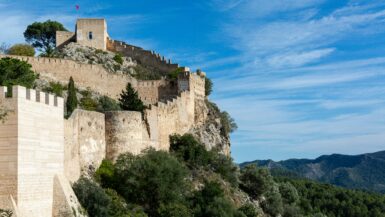If you’re looking for authentic Spanish mountain village charm without the crowds, Gata de Gorgos is exactly what you need. This tranquil town is in the Alicante province, located inland on the northern Costa Blanca. It offers a much more peaceful, relaxed lifestyle with a slower pace which might be preferred for travellers who want to experience real Spain away from the tourist trail.
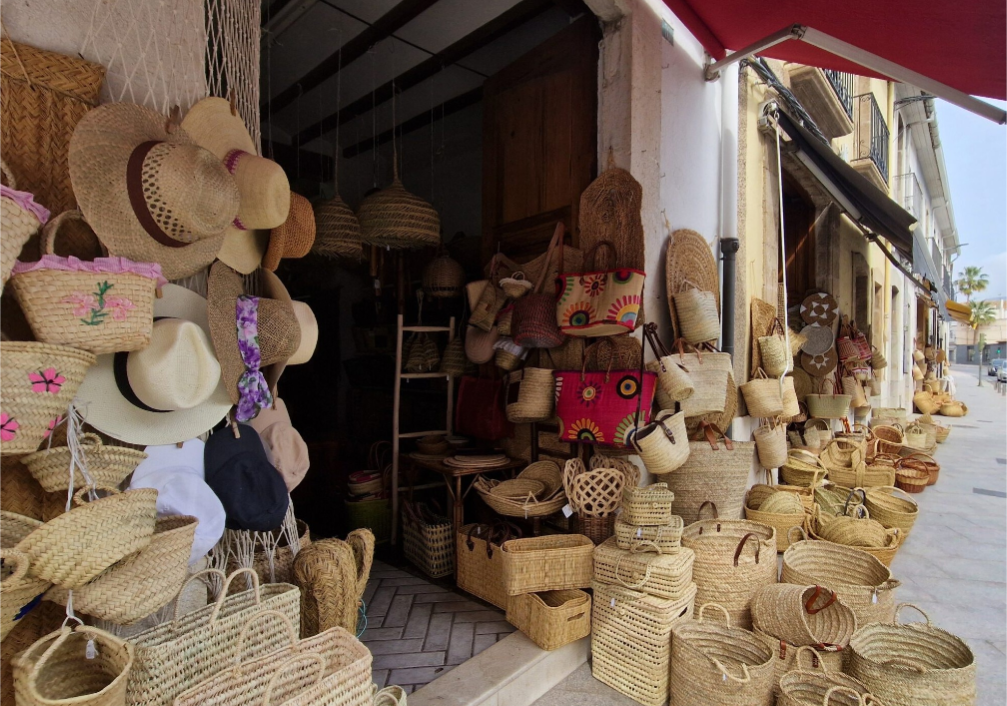
I’ve put together everything you need to know about visiting this wonderful little town, from its famous basket-making traditions to the best hiking trails and local restaurants.
Where is Gata de Gorgos?
Gata de Gorgos is located in the Marina Alta region of Alicante province, about 100 kilometres north of Alicante. The town is perfectly positioned between the coast and the mountains – you’re just 15 minutes from the beach at Denia and surrounded by stunning mountain scenery.
From Alicante airport, it’s about a 1 hour and 15 minute drive north along the AP-7 motorway. The town is also easily accessible from Valencia, sitting about 105 kilometres south of the city.
About Gata town
Gata de Gorgos takes its name from the Gorgos River that runs through the valley, creating the fertile land that has supported the town for centuries. The river has been essential to the town’s development, providing water for the agricultural terraces (bancales) that climb up the surrounding mountainsides.
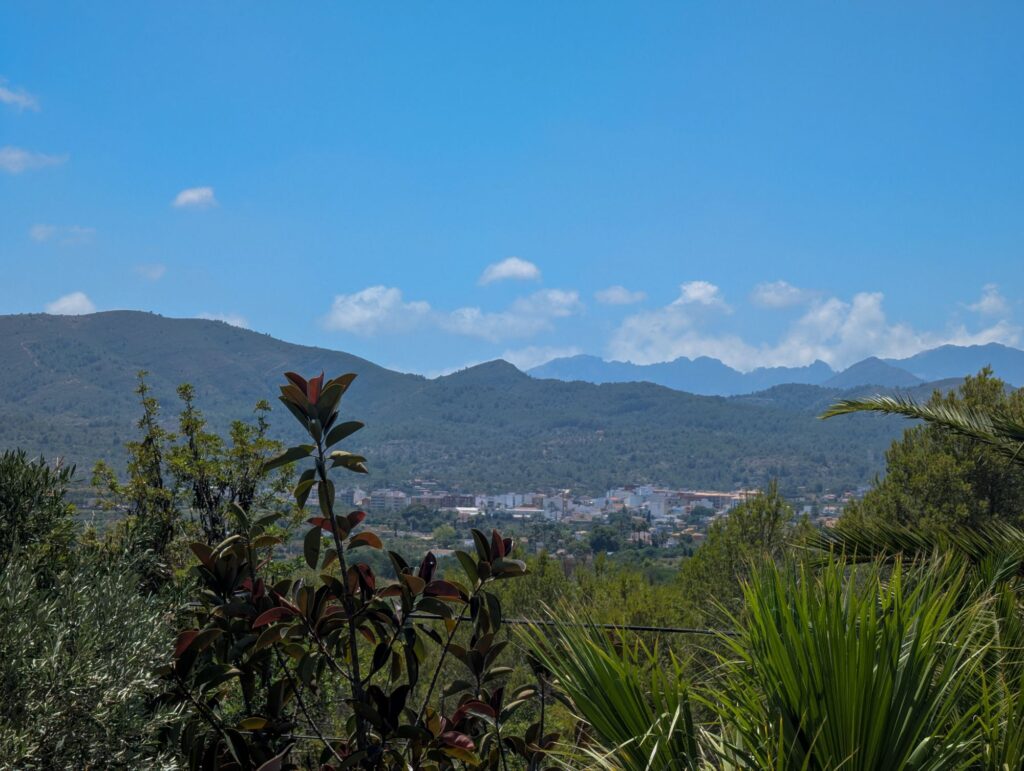
The town’s layout follows the typical Spanish mountain village pattern, with narrow streets radiating out from the central square where you’ll find the Church of San Miguel Arcángel near the centre. The old quarter retains much of its traditional character, with stone houses and small plazas that have remained largely unchanged for generations.
What makes Gata de Gorgos special
The basket-making tradition
This is what Gata de Gorgos is truly famous for throughout Spain. The town has been the centre of traditional basket-making for centuries, dating back to the 15th century when it became specialised in producing wicker baskets (capazos) made from esparto grass and palm leaves.
Originally, these baskets were used for transporting the town’s abundant production of raisins, but over time the craft evolved into creating beautiful wicker furniture and decorative items. The tradition has been passed down through generations, and you’ll find skilled artisans throughout the streets who still create these items by hand using traditional techniques.
Traditional Spanish mountain village atmosphere
Unlike the more touristy towns along the coast, Gata de Gorgos has maintained its authentic Spanish character, similar to its neighbour village Jesus Pobre. The narrow streets, traditional houses, and local way of life give you a genuine taste of rural Spain that’s becoming increasingly rare to find.
Things to do in Gata de Gorgos
Visit the artisan shops
The main attraction here is definitely the basket-making shops. You’ll find them scattered throughout the town centre, and most artisans are happy to answer questions on their techniques and explain the process.
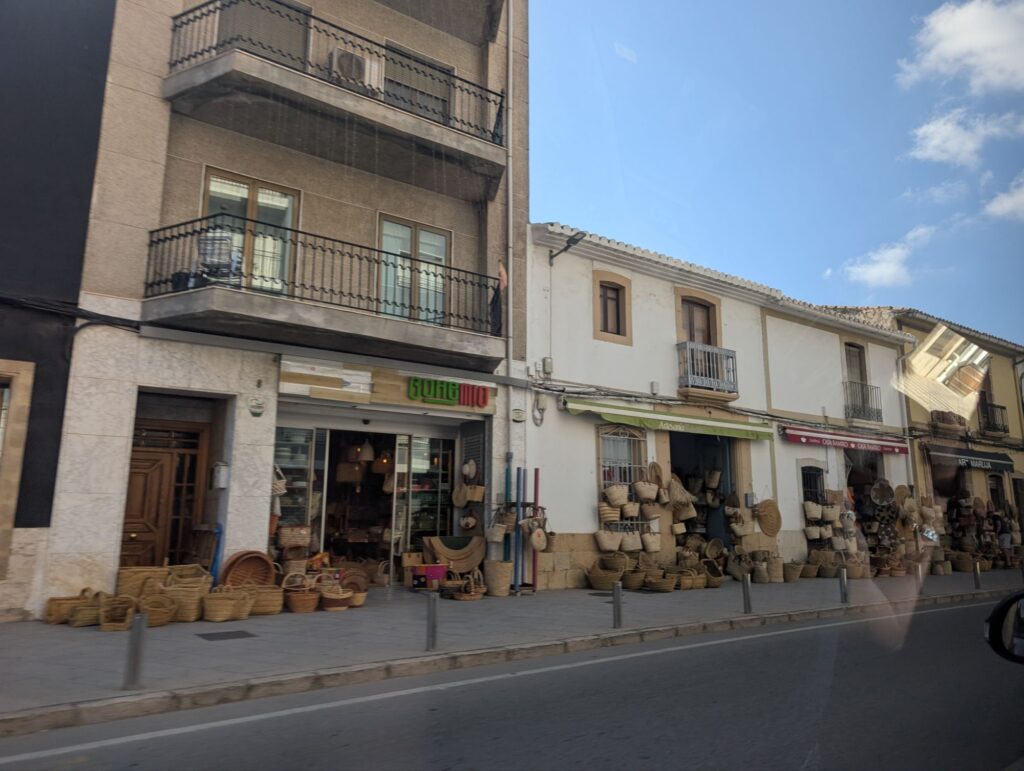
The quality of the work is incredible – these aren’t tourist souvenirs but genuine artisan pieces that will last for years. Prices are very reasonable compared to what you’d pay for similar handmade items elsewhere.
Hiking in the surrounding mountains
The location is perfect for hiking enthusiasts. The Orba Valley offers some fantastic trails with varying difficulty levels, and the views across the valley and towards the Mediterranean are stunning.
One of my favourite walks is the trail up to the Coll de Rates pass, which gives you incredible panoramic views. It’s about a 2-hour round trip and suitable for most fitness levels.
Local festivals and markets
The town really comes alive during its festivals, particularly the annual Fira de la Cistella (Basket Fair) in August. This celebrates the town’s basket-making heritage with demonstrations, competitions, and plenty of local food and drink.
The main patron saint festivities take place between 27th July and 6th August in honour of the Santísimo Cristo del Calvario. There’s also the festival of San Miguel Arcángel on 29th September, and the unique Three Kings celebration on 5th January where they perform a traditional mystery play called “Misterio de los Reyes Magos”.
There’s also a weekly market on Thursdays where you can buy fresh local produce and handmade crafts.
Where to eat and drink in Gata
Bar la Concordia (also called The Secret Garden) is an absolute must-visit and one of my most visited spots in Gata for a cold beer with my parents. La Concordia is a hidden bar near the Gata station, and as the name suggests – it has its very own charming outdoor garden where you can enjoy drinks (and food on certain nights) in a peaceful atmosphere, with lovely locals.
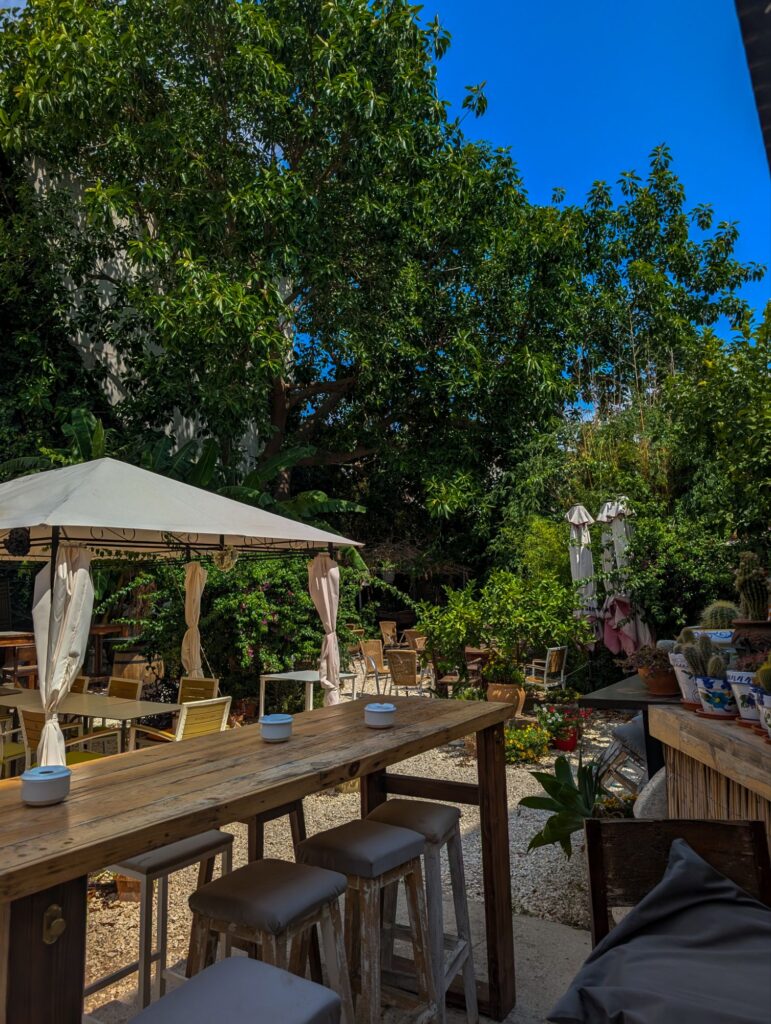
Restaurant Ca Pepe is another local favourite, serving traditional paella and other rice dishes. The portions are generous and the quality is excellent.
For something more casual, Bar Central in the town square is perfect for tapas and a cold beer while watching the Gata village life go by.
Day trips to nearby attractions
Gata de Gorgos makes an excellent base for exploring the region:
- Denia is just 15 minutes away with its beautiful beaches and excellent seafood restaurants
- The historic town of Xàbia is about 20 minutes drive
- You can reach the mountain village of Guadalest in about 45 minutes
Where to eat
Traditional Spanish cuisine
The restaurants here serve proper local food at very reasonable prices. You’ll find excellent rice dishes, fresh seafood brought up from the coast, and traditional mountain cuisine.
Restaurant Ca Pepe is a local favourite, serving traditional paella and other rice dishes. The portions are generous and the quality is excellent.
For something more casual, Bar Central in the town square is perfect for tapas and a cold beer while watching village life go by.
Local specialities
The town is known for its excellent honey, produced in the surrounding mountains. You can buy jars directly from local producers, and it makes a perfect souvenir.
Gata is surrounded by groves with almonds, olives and grapes – I highly rate them and you should definitely pick them up in the Friday market! You’ll find them in many traditional Spanish sweets and cakes served in the local cafes.
Getting around Gata
The town is small and easily walkable. Most of the artisan workshops and restaurants are within a few minutes’ walk of each other.
There is no bus service, but there is a nearby tram which can take you to Benidorm, Denia and many other stops along the way. If you want to venture into the surrounding mountains or visit nearby towns, having a car is definitely recommended.
Best time to visit
Gata is fine to visit at all times of the year, but especially in Spring (March to May) and autumn (September to November) are ideal times to visit Gata. The weather is pleasant for hiking, and you’ll avoid the summer heat and crowds.
Summer can be quite hot, but the mountain location means it’s generally cooler than the coast.
Language
Spanish is the main language, with some Valencian spoken locally. English isn’t widely spoken, so having a few basic Spanish phrases will be helpful and appreciated by the locals.
Accommodation
There are a few small hotels and guesthouses in town, but many visitors stay in nearby Denia or Javea and visit Gata de Gorgos as a day trip.
If you want to stay locally, book accommodation in advance, especially during festival times, as options are limited.
Why visit Gata de Gorgos?
This town offers something increasingly rare – an authentic Spanish experience that hasn’t been altered for tourists. The basket-making tradition, mountain setting, and genuine local atmosphere make it a refreshing change from the more commercialised parts of the Costa Blanca.
It’s perfect if you want to see traditional Spanish craftsmanship, enjoy some excellent hiking, and experience real Spanish village life. The prices are reasonable, the people are friendly, and you’ll leave with a genuine appreciation for this lesser-known part of Spain.

